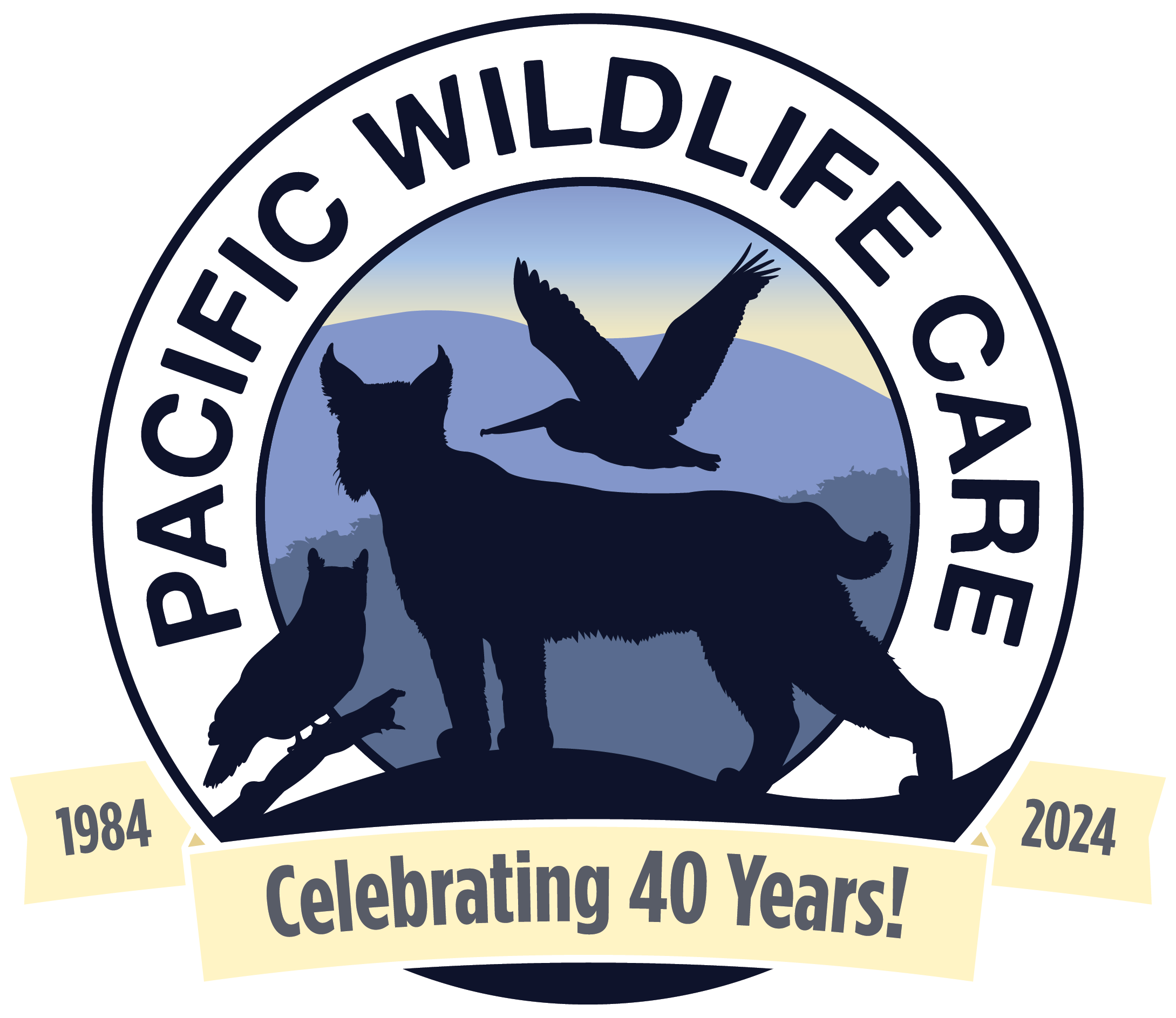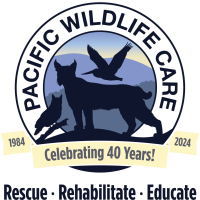Deer
- Fawns wandering and crying are an indication that the mother has been hurt and not returned. If you are sure the mother has not returned for several hours and the fawn is so young it will let you pick it up, take it to Project Wildlife. If the fawn is older and stays around the area, it may need help getting enough food and water. You may put out a clean container of water and set out its normal browse food (cuttings from blackberry bushes, roses, pyracantha, alfalfa, or apples). Do not handfeed deer.
- Fawn in the Yard. Make sure the doe can get into the area. If this is not possible, find the hole in the fence through which the fawn got in, put the fawn outside of it, and close the hole. The mother will return for the fawn soon. If no humans are around when she returns, she will likely reclaim her fawn despite the human scent. Handle only fawns that are small enough to be carried. Wait for the mother to return or call Project Wildlife.
- Anyone who comes upon a fawn should leave it alone and go away so its mother can feel free to return. Only if the fawn is obviously emaciated or injured, or if there is a pack of dogs roaming the area, should it be touched. If a doe is found dead and the fawn orphaned, call Project Wildlife.
- Deer eating garden and landscaping plants. “Fence or share” is the general rule. Deer fencing should be 8 feet high if possible and made of high-tensile wire, mesh fencing, or electric wiring; placement may be angled to prevent the animal from jumping over. If fencing the entire area is too expensive, fencing individual plants is effective.
- Black Dacron bird netting, purchased from a plant nursery, is effective when placed over planting beds or individual plants. The nets let new growth through, so they must be lifted and reset every few days to maintain protection. Netting can also be used as an extension above a fence that is too low.
- Repellents can be effective through bad taste and others indirectly by sight, smell or sound. The following homemade concoction can be effective if sprayed directly on plants and reapplied weekly. Mix well two eggs, one glass of skim milk, one glass of water, and a spreader- thickener (a wetting agent purchased from plant nurseries). Apply. Hang indirect repellents, including nylon stockings containing small amounts of human hair; mirrors; strips of tinfoil; or commercial smell repellents. Or hang rags soaked in ammonia on branches; replenish with ammonia regularly to maintain the odor. Deer are adaptable, so it is important to vary the methods, or the animals will learn that the repellents are not harmful and will no longer be deterred by them.
- Planting deer-resistant plants can be an alternative, although none is totally guaranteed, especially when drought conditions constrict food sources.
- Many people choose to share their yards with deer and other wildlife and purposely plant vegetation that will support wildlife.
- Deer with broken leg or other injury. Leave the animal alone unless it can’t stand up. In this case, call Project Wildlife. If the animal is getting around with a broken leg, leave it on its own. Even though the injury may take a long time to heal, this is far preferable to the trauma of chase and capture.

